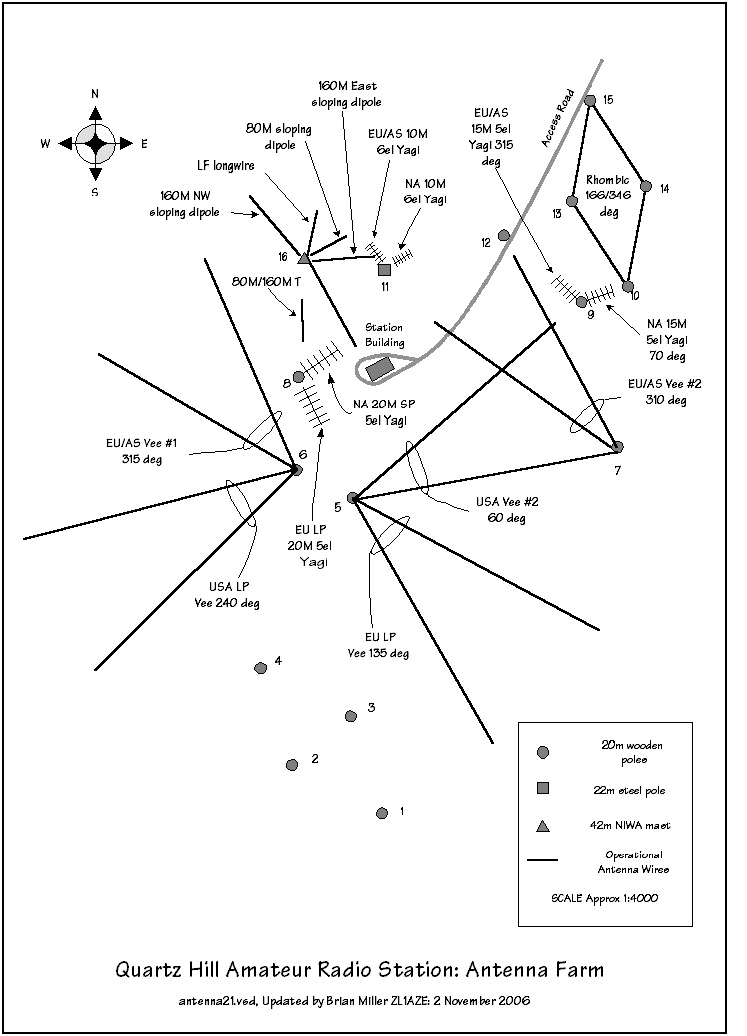The Quartz HIl site is essentially a peneplain elevated around 300 metres above sea level. The large and reasonably flat area has been developed as a superb long-wire antenna farm. All of the 20 metre poles, the 22 metre metal pole, and the 41 metre tower were in existence when the Wellington Amateur Radio Club negotiated the lease of the property. However, the antenna configuration has changed significantly as the Quartz Hill User Group has adapted the configuration to suit amateur band activities.
From the top of a 20m pole with a long wire hanging off it!
While we have one Rhombic antenna, a Beverage and a 160m long-wire antenna, by far the majority of the antennas are unterminated Vee Beams. These antennas are simple to construct and give excellent performance on the HF bands if they are over 200m per leg. They typically give over 10db of gain and have excellent directivity, although they do not have good front-to-back characteristics because they are not terminated.
The antennas are fed by open wire feeders and are matched outside the station building using baluns fed by short lengths of coaxial cable.
A feedline out into the paddock
The Rhombic is remotely switched to change direction. This antenna is even more directive than the Vee Beams, giving high gain, but the extreme directivity often limits its application in contests.
Not all the antenna experiments were successful. For example, a full-size 160M loop performed surprisingly poorly and worse still, turned out to be oriented for the best possible reception of an a distant, but powerful, in-band radio navigation signal. Much better results are now being obtained on 160M DX from a large sloping L antenna which is supported at its highest point by a 40M high lattice tower.
The antenna farm plan drawing illustrates the result. Individual feeders to each antenna are used so that we can operate from at least three separate positions in the station building, simultaneously. A simple antenna patch panel in the termination room, allows any antenna to be routed to any operating position to maximize operating opportunities. It also avoids placing switching gear out on the farm in order to minimise maintenance problems. The exception to this rule was the single remaining rhombic which has its reversing switch, remote controlled by a dedicated open wire DC feed.
